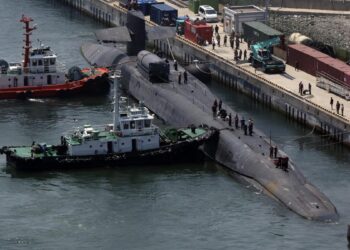[ad_1]
The Prime Minister of Sri Lanka said the agreement would pave the way for the island faced with its worst economic crisis to raise bilateral and multilateral funding from development partners.
The Prime Minister of Sri Lanka said the agreement would pave the way for the island faced with its worst economic crisis to raise bilateral and multilateral funding from development partners.
Sri Lankan Prime Minister Dinesh Gunawardena on September 1 said the reaching of the staff-level agreement with the International Monetary Fund (IMF) for a $2.9 billion bailout was an “important milestone” in the attempt to revive the country’s economy which is facing a deep recession.
The IMF mission, following a week of talks with the Sri Lankan government, on Thursday announced that it has reached a staff-level agreement which would enable the crisis-hit country to avail $2.9 billion under the extended fund facility.
Sri Lanka is bankrupt because of the Rajapaksas, says Chandrika Kumaratunga
Mr. Gunawardena, speaking in Parliament after the IMF announcement, said the agreement would pave the way for the island faced with its worst economic crisis to raise bilateral and multilateral funding from development partners.
“In future, we will have to make major sacrifices in order to find solutions to the factors that led to this economic debacle,” Prime Minister Gunawardena said.
Mr. Gunawardena, however, said this was just the beginning and Sri Lanka had a long way to go before securing the facility.
He stressed the need for economic reforms, including action to restructure the loss-making state-owned enterprises. “Whoever will be in power, these reforms need to be implemented,” Mr. Gunawardena said.
The IMF stated that Sri Lanka reaching an agreement with official and private creditors would be the key to obtaining the facility.
Sri Lanka made a late decision to enter a deal with the IMF when the island was gripped by its worst economic crisis since its independence in 1948.
Comment | Sri Lanka stares at bankruptcy or redemption
The forex crisis caused shortages of essentials with people forced to hold anti-government protests leading to the ouster of then President Gotabaya Rajapaksa in mid-July.
Mr. Rajapaksa was replaced by his ally Ranil Wickremesinghe, who is also the country’s Finance Minister and is leading the talks with the IMF delegation.
Sri Lanka started negotiating for the facility in late April after announcing its first-ever international debt default. The government later appointed legal and debt advisors to handle the debt restructuring as prescribed by the IMF.
The IMF calls for action to raise fiscal revenue by implementing tax reforms, introducing cost recovery-based pricing for fuel and electricity, raising social spending to help the poor and the vulnerable in the ongoing economic crisis, restoring flexible exchange rates, a capitalised banking system and a stronger anti-corruption legal framework.
Sri Lanka, a country of 22 million, owes $51 billion in foreign debt, of which $29 billion must be paid by 2027.
What’s next for Sri Lanka? | In Focus podcast
The debt-ridden country is also expected to restructure its debt worth $29 billion, with Japan expected to coordinate with other creditor nations, including China on this issue.
President Wickremesinghe-led government is hoping that an IMF bailout package could be the possible antidote for Sri Lanka’s beleaguered economy.
A crippling shortage of foreign reserves has led to long queues for fuel, cooking gas, and other essentials while power cuts and soaring food prices have heaped misery on the people.
[ad_2]
Source
















